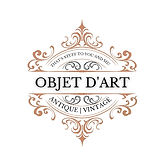Antique mahogany tea caddy/ box ( possibly from a shop) this fabulous small mahogany box was possibly made as an apprentice piece or by a skilled wood worker to show how a lager box may look amazing patina lovely hinge and hand carved opening 12 1/2 cm tall 7 cm wide 12 cm depth
Apprentice pieces are scaled-down versions of furniture or other items that were made by apprentices to demonstrate their skills:
History
Apprentices were often given inexpensive materials and asked to make something to the best of their ability to prove their skills to a potential employer. These pieces are often from the 1800s and can include chairs, tables, chests of drawers, and cupboards.
Characteristics
Apprentice pieces are often rare and can be more valuable than the full-sized item. They can be difficult to distinguish from the real thing, and are sometimes used by salesmen to show potential customers what they could order.
Uses
Apprentice pieces are popular decorative items and are sought after by collectors.
Examples
A Louis XV walnut "menuisier's" or apprentice piece is a rare example of an apprentice piece.
The history of wooden tea caddies is marked by the following events:
17th century
The popularity of tea in England increased due to the efforts of Catherine of Braganza and the court of Charles II. Tea was expensive and exclusive, so it was kept in grand style.
18th century
Tea was a status symbol for the wealthy upper classes, and tea caddies were expensive and decorative. They were made from a variety of materials, including wood, metal, tortoiseshell, pewter, brass, or copper.
19th century
Lockable wooden tea caddies were made with zinc-lined compartments for tea and a central glass bowl for sugar.
Victorian era
Tea remained expensive, and only the lady of the house, the housekeeper, or the butler had access to the tea caddy keys.
Later years of Queen Victoria's reign
The price of black tea from India decreased, making it more accessible to the working classes.
Today
Tea caddies come in a variety of designs, shapes, and sizes, and are airtight to protect the tea.
Some of the most renowned tea caddy designers and makers from the 18th and 19th centuries include Chippendale and Hepple White.
When looking for an antique tea caddy, you can consider things like:
Complex shapes, Fine inlays, Exotic veneers, Silver, Makers marks, Color, Patination, and Original untouched condition.
Antique mahogany tea caddy/ box
Stock No
559


































